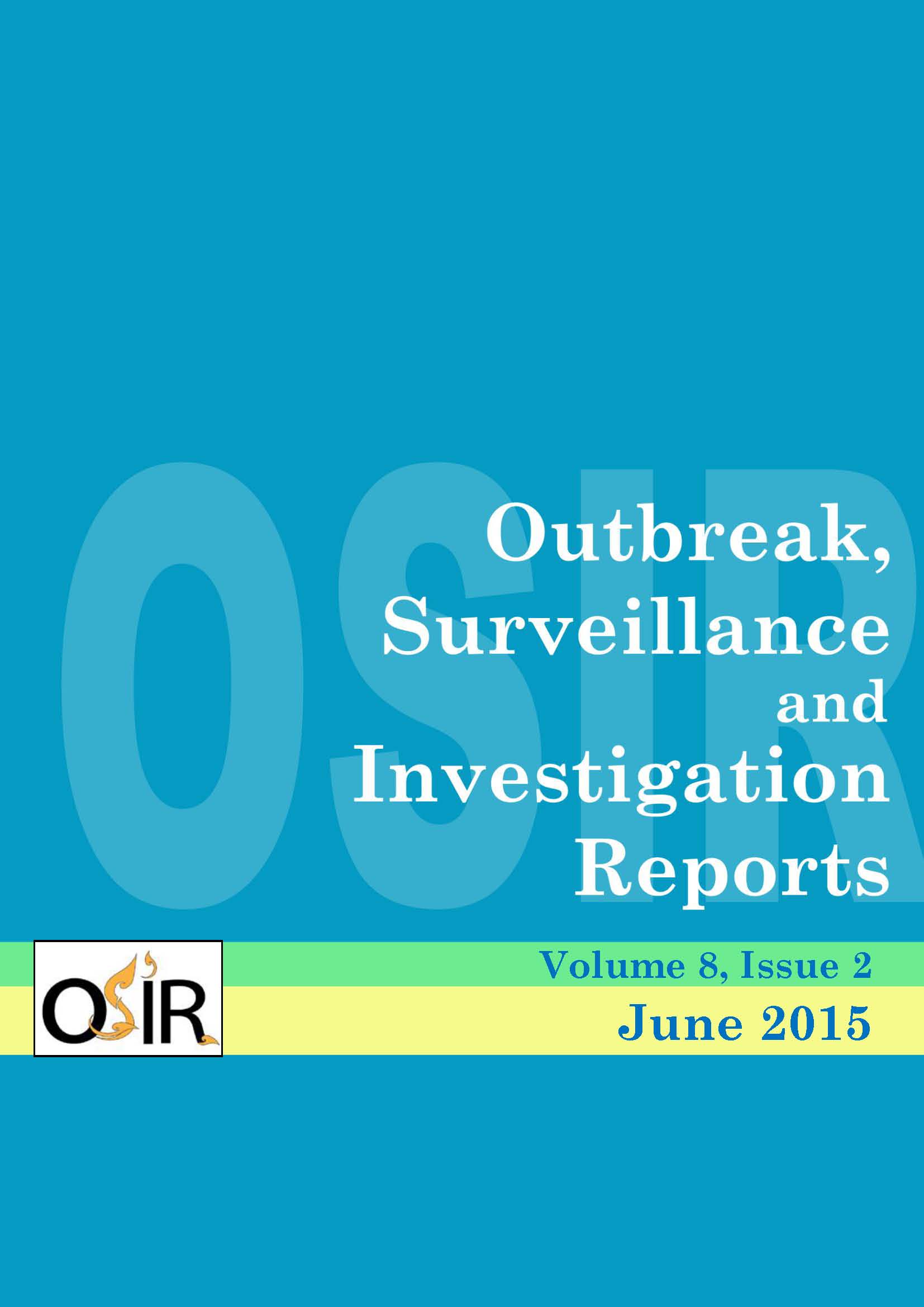Severe Complicated Malaria in High Risk Areas of Mon State, Myanmar, 2006-2012
DOI:
https://doi.org/10.59096/osir.v8i2.263278Keywords:
severe complicated malaria, Mon State, micro-stratification, MyanmarAbstract
Cases of severe complicated malaria in Myanmar had declined during 2006-2012, yet some townships in the southeastern part continued to report poor outcome of malaria patients in spite of applying similar interventions as other high-risk areas. The purpose of this paper was to understand the reasons behind the poor malaria outcome of some townships in Mon State. We described trends and distribution of severe complicated malaria cases in 2006-2012. During 2006-2012, Yae Township contributed one-third to half of all severe complicated malaria cases in Mon State every year. In 2012, more than 25% of confirmed malaria cases were reported from high risk areas, including Beelin, Kyaikhto, Thaton and Yae Townships. Among these townships, Yae and Kyaikhto reported higher proportion of severe complicated malaria cases among under five children and pregnant women in 2012. In addition, fewer number of malaria cases was detected by village health volunteers than basic health staff in these townships, which might be due to inaccessibility to health services. Strengthening surveillance system and community-based malaria control program in Yae and Kyaikhto might reduce severe complicated malaria in these areas.
References
World Health Organization. World malaria report 2013. Geneva: World Health Organization; 2013. p.57.
President’s Malaria Initiative. Malaria operation plan FY 2013 for Greater Mekong Subregion [cited 2014 Feb 4]. <http://www.pmi.gov/docs/default-source/default-document-library/malaria-operational-plans/fy13/mekong_mop_fy13.pdf?sfvrsn=8>
World Health Organization - Mekong Malaria Programme. Strategic plan to strengthen malaria control and elimination in the Greater Mekong Subregion: 2010-2014. 2009 [cited 2014 Feb 4]. <http://whothailand.healthrepository.org/bitstream/123456789/696/1/Strategic%20Plan%20to%20Strengthen%20Malaria%20Control%20and%20Elimination%20in%20the%20Greater%20Mekong%20Subregion%20%2020102014.pdf>
Myanmar. Ministry of Health. Health in Myanmar, 2013.
Myanmar. Department of Health. Ministry of Health. Surveillance data from National Malaria Control Program, 2006-2012.
Myanmar. Department of Medical Research, Lower Myanmar. Ministry of Health. Potential spread of artemisinin resistant malaria to other parts of Myanmar. 2013.
World Health Organization. Proposal for National Malaria Control Program including artemisinin resistance containment. Yangon: World Health Organization, Myanmar; 2012.
World Health Organization. External evaluation of National Malaria Control Program, Myanmar. New Delhi: World Health Organization Regional Office of South East Asia; 2013.
Myanmar. Department of Health. Ministry of Health. Annual report from Mon State Vector Borne Disease Control Program. Mawlamyine: Mon State Health Department; 2012.
Win H. Malaria situation in Mon State, 1978-1982. Yangon Institute of Medicine. 1985. p.83.
World Health Organization. Guidelines for diagnosis and management of malaria in Myanmar. 2011. p. 9-17.
Myanmar. Department of Health. Ministry of Health. Mon State health profile. 2013.
Myanmar. Department of Health. Ministry of Health. Monitoring and evaluation plan for malaria prevention and control, 2010-2015. Nay Pyi Taw: National Malaria Control Program; 2012. p. 10-12.
Japan International Cooperation Agency and United Nations Children's Fund. Malaria risk micro-stratification in UNICEF 80 townships: No publication year. p. i-v.
Pasvol G. The treatment of complicated and severe malaria. Br Med Bull. 2006 Feb 22;75-6:29-47. Print 2005 [cited 2014 Feb 4]. <http://www.bmb.oxfordjournals.org/content/75-76/1/29>
Ejov MN, Tun T, Aung S, Lwin S, Sein K. Hospital-based study of severe malaria and associated deaths in Myanmar. Bull World Health Organ. 1999;77(4):310-4 [cited 2014 Feb 4]. <http://www.who.int/bulletin/archives/77(4)310.pdf>
Kheang ST, Duong S, Olkkonen A. Increasing access to early malaria diagnosis and prompted treatment in remote Cambodian villages. Am J Public Health. 2011 Dec;101(12):e6-8. Epub 2011 Oct 20.
World Health Organization. Report of the first annual meeting for Myanmar artemisinin resistant containment (MARC). Nay Pyi Taw: Ministry of Health; 2012.
World Health Organization. Global plan for artemisinin resistance containment. Geneva: World Health Organization; 2011. p.29-31.
Downloads
Published
How to Cite
Issue
Section
License
Copyright (c) 2023 Outbreak, Surveillance, Investigation & Response (OSIR) Journal

This work is licensed under a Creative Commons Attribution-NonCommercial-NoDerivatives 4.0 International License.









